Ratio of piPlus spectra Prod3/Prod2
The production 2 spectra were generated in FEB 2006 with a script saved in ~debbe/analysis/newdAanalysis/spectraObject/dAu2003/newCutsAndCorr/run03BEffvarBin.Csave. This script is using the first version of Flemming's decay and absorption corrections (before they were placed in the official brahms/data08/correction directory. They also use my old rich efficiency correction that may not affect the spectra because I only fill it with pions with p>3.5 GeV/c. Tracking efficiency is done with the map I calculated for the RdAu paper (production1) the number of tracks found in production2 has increased and the correct thing is to use a new map extracted from from the same production, as is the case with the production 3 work.
In conclusion; the comparison between spectra produced with production 2 and 3 is bound to fail because the generation of production 2 spectra did not include the proper corrections.
19-APR-2007
This is a repository of diagnostic plots produced during spectra generation. I start with group A of dA runs.
Group A
4A843
Track proj. Z vs run number 4A843A
Data overlaid on acceptance 4A843A
4A430
Data overlaid on acceptance 4A430A
Group B
These runs have cross-talk in Camac discriminators used to define trigger 5 with INEL detectors. The normalization of these runs is done with trigger 4 (ZDC) properly scaled to reproduce the trigger 5 normalization as found in runs where INEL works well. The vertex definition for the normalization is done with G_fZdcVtxZ. The spectra are built with FS tracks, the vertex definition id done with FS_fVtxProjZ shifted by the mean of that distribution ( a few cm.) The elliptic cut that used to be done on Y, Z difference between INEL and track projection is changed to apply to the Y coordinate of the track projection only.
4A3450
Momentum vs run number 4A3450B
Track proj. Z vs run number 4A3450B
Data overlaid on acceptance 4A3450B
4A2268
Data overlaid on acceptance 4A2268
4A1692
Track proj. Z vs run number 4A1692
Data overlaid on acceptance 4A1692
27-Feb-2007
We are now reading dsts from Production 3. My work is done in the rcas machines in the directory: ~debbe/analysis/newdAanalysis/spectraObject/dAu2003/production3/
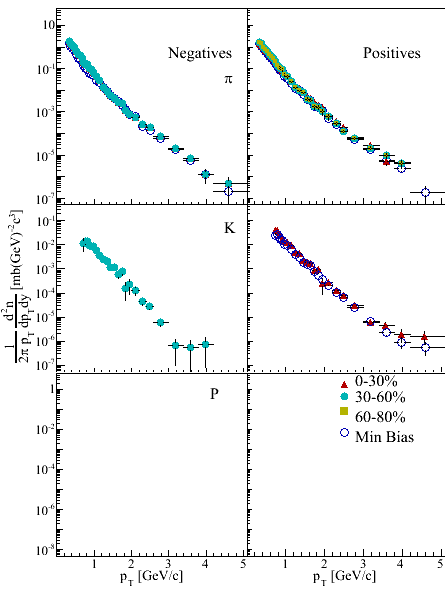
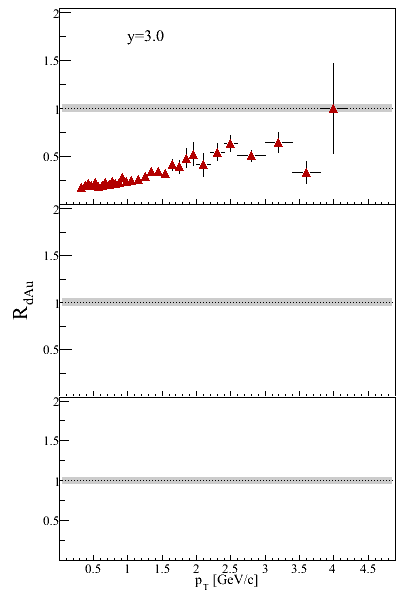
For what concerns this analysis Production 3 is different from the previous one mainly in the fact that it includes all d Au runs
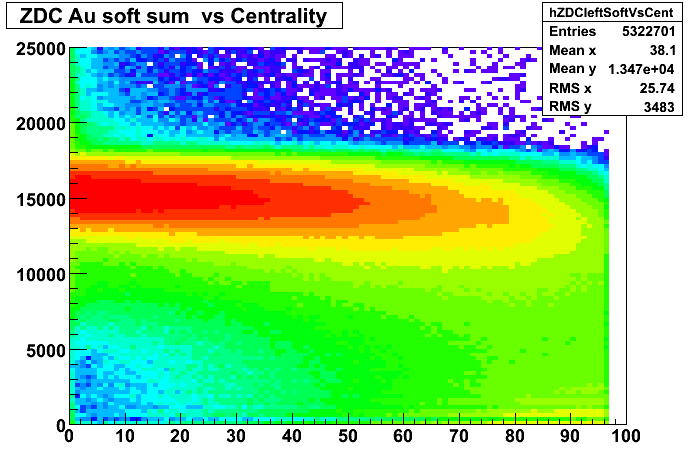
The ZDC soft sum versus centrality shown in the two figure above shows tha requiring a single neutron in the ZDC right (deuteron fragmentation region) will select events that are mainly peripheral, but we may still be able to apply some centrality conditions.
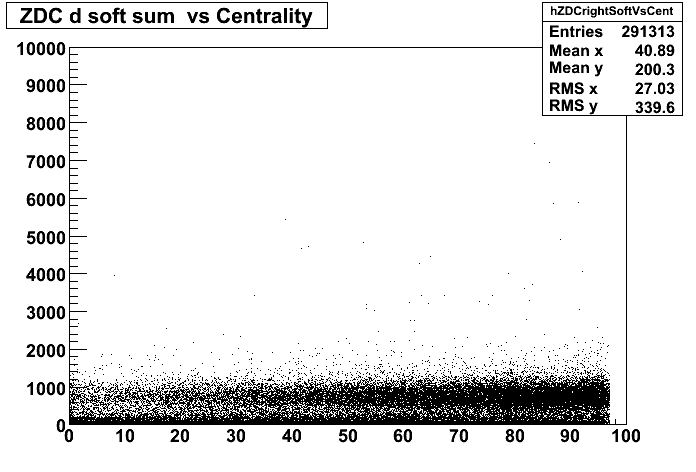
For the 4A3450 settings (run number > 8307), 1/3 of the events populate the pedestal peak in the ZDC sftware sum on the deuteron side.
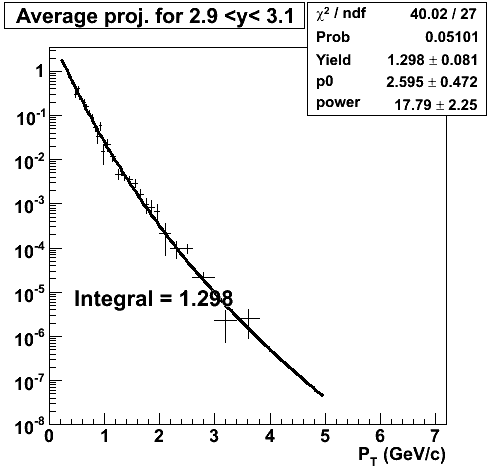
The spectrum shown in the figure above correspond to positive pions detected in the full FS spectrometer at 4 degrees in events that had signal in the ZDC right (d fragmentation region) corresponding to a single neutron at zero degrees.
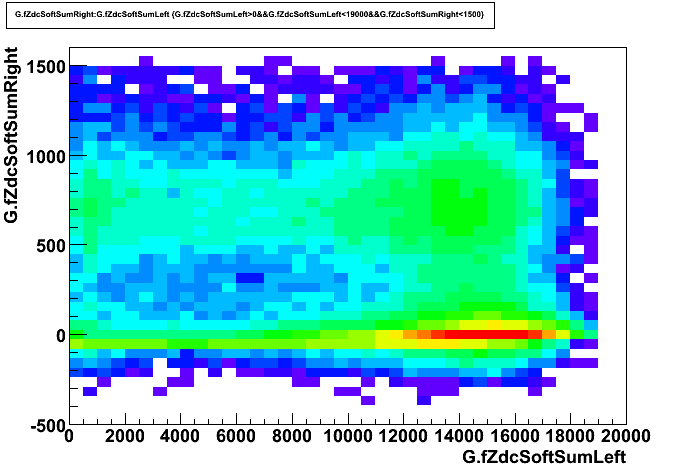
The figure above shows that a good fraction of events with several neutrons in the ZDC (Au side) also have a single neutron in the d side ZDC.
2-Feb-2006
Updated spectra that include new decay and absorption corrections, new vertex cuts, as well as cuts on Chi square of the global track fit.
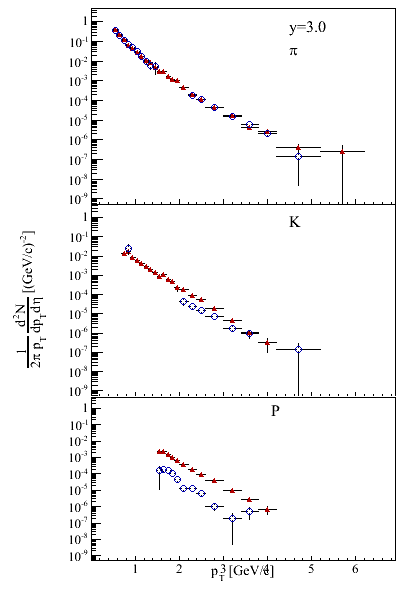
In similar fashion as done for the pp spectra the comparison between old and new spectra is presented below as ratios:
15-Nov-2005
More monitoring plots obtained during spectra generation:
The following plots were obtained with the method that compares calculated ring radius and the measured one. The distribution has gaussian shape and the particle is identified if the radii diference is within three standard deviations.
RICH pid full field 4 degrees A polarity
RICH pid quarter field 4 degrees A polarity
The difference of calculated radii minus measured ones is shown in the following plots:
Radius difference for PION assumption at full field 4 degrees A polarity
Radius difference for PION assumption at full field 4 degrees B polarity
Radius difference for KAON assumption at full field 4 degrees A polarity
Radius difference for KAON assumption at full field 4 degrees B polarity
Radius difference for PROTON assumption at field 4 degrees A polarity
Radius difference for PROTON assumption at field 4 degrees B polarity
13-Sep-2005
This is a page under construction I only use it to point to monitoring plots.
TrckVtxZ - InelVtxZ vs run number dAu 4B3450
TrckVtxZ - InelVtxZ vs run number dAu 4A843
vertex Y coordinate vs run number dAu 4A843
Data overlayed on acceptance map dAu 4A843
TrckVtxY vs run number dAu 4B3450
Momentum for trig 2 vs run number dAu 4B3450
Mass from RICH vs run number dAu 4B3450
Summary plots from the spectra generation package:
Summary for dAu positive pions.
Summary for dAu negative pions.
R. Debbe Last modified: Thu May 3 15:43:33 EDT 2007